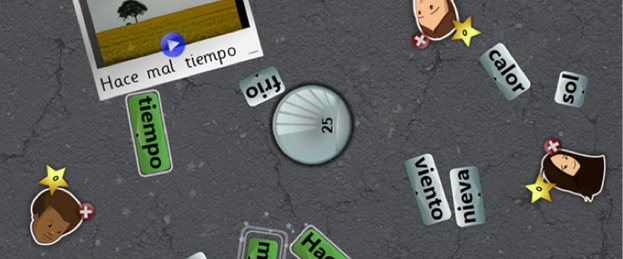Computer games are immersive learning environments. The player has to understand the game the strategies to succeed in it.
Although in computer games learning is rather hidden, but the learning effects in conventional games are not to ignore. Computer games promote, depending on the genre, skills like as hand-eye coordination when they require a high degree of skill in controlling the character. Strategy games on the other hand promote the combination of skill and tactical thinking of the player, if he must for example build cities. In addition, other skills, such as lateral thinking, concentration, patience and ambition, trained in many games.

In addition to standard computer games, which are used primarily for entertainment, there are other forms of games.
Edutainment games and serious games have the concern to teach in addition to the aforementioned indirect learning effects, information and knowledge.
Serious games are not primarily or solely for entertainment, however contain mostly entertaining elements, while the focus of attention is the outcome of learning. Shall belong real simulators, such as flight simulators, or games for the movement therapy.
Edutainment games distinguish from serious games in the way of providing the subject. Educational content that is not necessarily taught while playing, but (sometimes) only tested and strengthened. The game serves as a reward for learning and practicing the subject.
The information and knowledge is however done in a most balanced relationship with the entertainment aspects of video games, so that the player remains motivated while playing.
In addition to the mediation of knowledge and firming, these two forms of games promote subconsciously the already mentioned basic skills of the player.
Cropping of such games on natural user interfaces and the use of the corresponding input methods, such as touch input or body control, the promotion of these skills, such as hand-eye coordination, and the transmission of learning content that can be made much more efficient and attractive.
NIKVision
NIKVision is a tabletop prototype for kindergarten children aged between three and six years. It was designed by Javier Marco as part of his doctoral thesis at the University of Zaragoza in Spain.

The developed device complies technically a Rear DI Multi-touch table that was designed terms of size for children. In addition to the display on the table on which the children play, a second screen was installed to display more information and to expand the gaming experience.

Unlike many standard multi-touch tables NIKVision does not operate mainly with finger input, but with traditional toys with a marker attached to the underside.
The idea behind NIKVision was to bridge the gap between the physical play with toys and computer games. Different virtual worlds have been created which can be changed by moving and shifting the toys on the tabletop. The changes, occurring in the virtual world, are presented just below the toys as well as on the attached, external monitors and reported back on acoustic effects on the child at play.
Finguistics
Finguistics is a “proof of concept” edutainment application that has emerged within three weeks in December 2008 in cooperation between the British company RM, Lightbox, Infusion and Microsoft UK.
At the launch of the Microsoft Surface only a few applications were on the market. So Microsoft UK joined with UK-based RM (Research Machines), which is a specialist in products in the education sector, RM subsidiary lightbox, as well as the software design and development company infusion.
The aim of this collaboration was to develop a “proof of concept” edutainment application for the “BED, 2009” (British Educational Training and Technology Show), to demonstrate the capabilities of the Microsoft Surface in schools.
The resulting application Finguistics was developed for children in the age between five and fifteen, and should be intuitive and easy to understand even for children without any computer experience.
Moreover, the program should, in connection with the Surface Technology, cut out the “smart board”-technology with he multi-user capabilities of the Microsoft Surface.
Finguistics thereby encourages the cooperation of students, since the tasks can be solved only in the team.
The student must assemble words or grammatically correct sentences form scattered letters and words displayed on the tabletop.
Upcoming blog entries
Making The Game – Part 8: Advantages and disadvantages of NUI and GUI
Making The Game – Part 9: Game Design
…
